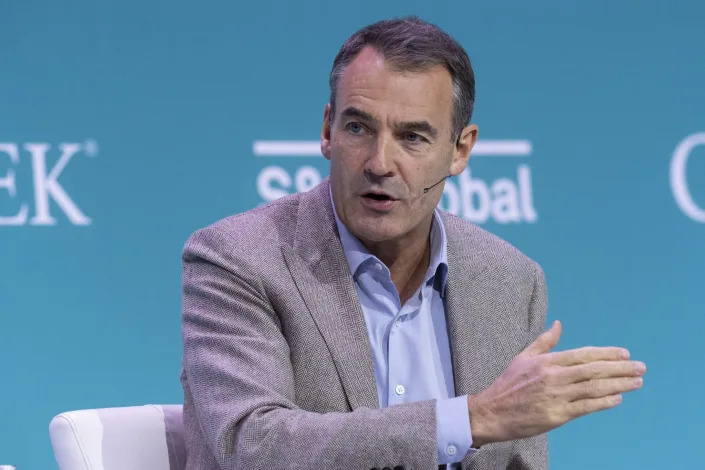SOCIALISM FOR THE RICH
Des Moines Public Schools may close buildings, cut staff to balance future budgets
Samantha Hernandez, Des Moines Register
Wed, February 8, 2023
Des Moines Public Schools officials could close buildings as part of balancing next year's budget. They're also exploring the potential for staff cuts.
That's what officials said Tuesday night during a Des Moines School Board discussion on the 2023-24 school year budget. They are beginning their planning on a budget amid new legislation that uses taxpayer money to help send students to private schools and a 3% state funding increase that lags behind the 6.5% annual inflation rate at the end of 2022.
Closing yet-to-be-identified buildings and moving expenses to nongeneral fund accounts, as well as making other cuts, could save an estimated $1 million, Interim Superintendent Matt Smith and Chief Financial Officer Shashank Aurora told board members.
More:What does Iowa's $107M funding increase really mean for its public schools? What we found:
“We're looking on both for FY '24 and, of course, beyond, the elimination of some facilities and the consolidation of other facilities," Smith said during the meeting. "And, so, there's more to come on that and our budget season, but there is some consolidation that will be taking place."
Officials are considering closing some athletic and/or extracurricular facilities around the district, Aurora told the Des Moines Register Wednesday. A final decision on which facilities might close has not been made.
An outside company is conducting a district-wide demographic study the board will use to decide if district boundaries need to be redrawn or if buildings will be closed, he said.
“There's also the consolidation of some underutilized facilities,” Smith said Tuesday. “… And so, we're looking on both for FY '24 and, of course, beyond the elimination of some facilities and the consolidation of other facilities.”
Closures could be considered for the 2024-25 school year budget as well, Smith said.
The district must cut about $9.8 million from next year's budget, Aurora said. The total of the proposed 2023-24 budget will not be available until mid-March.
This is not the first time officials have discussed closing buildings as a cost-saving measure. During 2022-23 budget discussions, Aurora told the board the district might have to consider closing buildings.
Staffing and health care cuts also possible
Additional proposed cuts include changes to the employee health care plan and staffing.
The health care plan change would save the district an estimated $750,000, the administration said. Under the proposal, employees no longer would have a $100 copay on specialty medicines like cancer medication or EpiPens, the administration said.
Proposed staffing reductions could save an estimated $9 million and include cuts to 2% of the teaching staff because of declining enrollment, 5% of support staff and 5% of central office staff, they say.
"One of the top priorities for (Des Moines Education Association) is to keep cuts as far away from classroom individuals directly engaged with students as possible," said Josh Brown, the teachers union president, in an interview Wednesday. "We are surveying our members currently to get their priorities in the budget to be able to amplify and lift up their voices in the process."
Heading into the current 2022-23 school year, district officials made $9.4 million in cuts because of declining enrollment. Those reductions included eliminating 12 full-time positions, canceling a conference and using money earmarked for other costs to cover general spending.
The effects of the new 'school choice' law
The newly passed "school choice" law will eventually put $7,635 into an account for every student who wants to attend private school. The law was a top priority for Gov. Kim Reynolds over the last three legislative sessions.

Central Campus is seen on April 29, 2021 in Des Moines.
The new law also gives public school districts about $1,205 in additional money for each private school student who lives within district boundaries. But those districts would also lose about $7,600 per student for those who choose to leave for a private school through an education savings account.
Districts will only get the supplemental funds for students who apply for and receive an ESA, Aurora said.
Des Moines Public Schools, which has an enrollment of about 31,000, has lost 2,500 students over the last three years for reasons including open enrollment and families relocating, Smith said.
"This actually started prior to the pandemic," he said. "The pandemic exacerbated and amplified that loss of enrollment."
Related:How far will Iowa's $7,600 education savings accounts go for covering private school costs?
The district lost 500 students last school year following the passage of several new laws, including the end of the open enrollment deadline, Aurora said in the same interview. This school year, the district has lost 250 students.
The budget will likely not be approved until April. District officials plan to hold community budget information meetings in late February and early March.
Samantha Hernandez covers education for the Register. Reach her at (515) 851-0982 or svhernandez@gannett.com. Follow her on Twitter at @svhernandez or Facebook at facebook.com/svhernandezreporter.

















